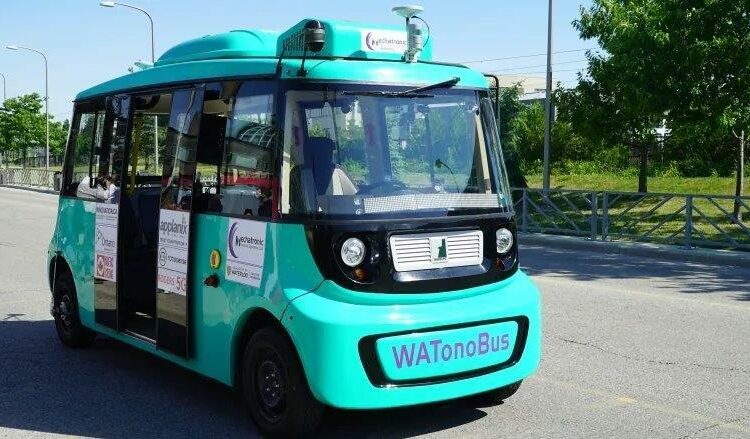WATonoBus expected to be available for student use by fall
Students at the University of Waterloo will soon be able to ride to class in style — on a driverless shuttle bus dubbed the “WATonoBus.”
The WATonoBus system was developed on-campus at the university and is believed to be the first self-driving shuttle bus at a Canadian university.
It’s equipped with 360-degree cameras, and a light detecting and ranging (or LIDAR) system that can sense when pedestrians and cyclists are around. A remote operator watches from a nearby lab, and can take over if needed.
For now, a backup driver also rides along as a safety net.
“It is very rare that I need to take over at this point,” said Aaron Sherratt, a lab technician who played backup driver during test runs Thursday.
The bus travels a 2.7 km route around campus, making five stops along the university’s Ring Road. Right now, it maxes out at a speed of 20 km/hr.
Mechanical engineering professor Amir Khajepour said it’s hoped the shuttle will be up and running by the time students are on campus in the fall.
The WATonoBus is part of the province’s Automated Vehicle Pilot Program, which allows testing of driverless cars as long as a safety operator is on board. Before the bus can begin running as a regular service, it needs the green light from the Ministry of Transportation.
Going forward, Khajepour hopes the technology will be used widely, with Kitchener-Waterloo becoming a hub for the development of autonomous transportation. He believes the technology could be used for city buses, and in other industries, such as mining.
“This is a good test bed to evaluate usage of automated driving,” he said.
Going forward, Khajepour hopes the technology will be used widely, with Kitchener-Waterloo becoming a hub for the development of autonomous transportation. He believes the technology could be used for city buses, and in other industries, such as mining.
“This is a good test bed to evaluate usage of automated driving,” he said.
Scheratt is also confident autonomous vehicles are the way of the future. He noted that self-driving shuttles aren’t distracted by the daydreams or the radio — they’re just focused on driving.
“It only thinks about what it needs to think about, it doesn’t get distracted,” said Sherratt.
“It’s safer than your standard Uber driver,” he added.


